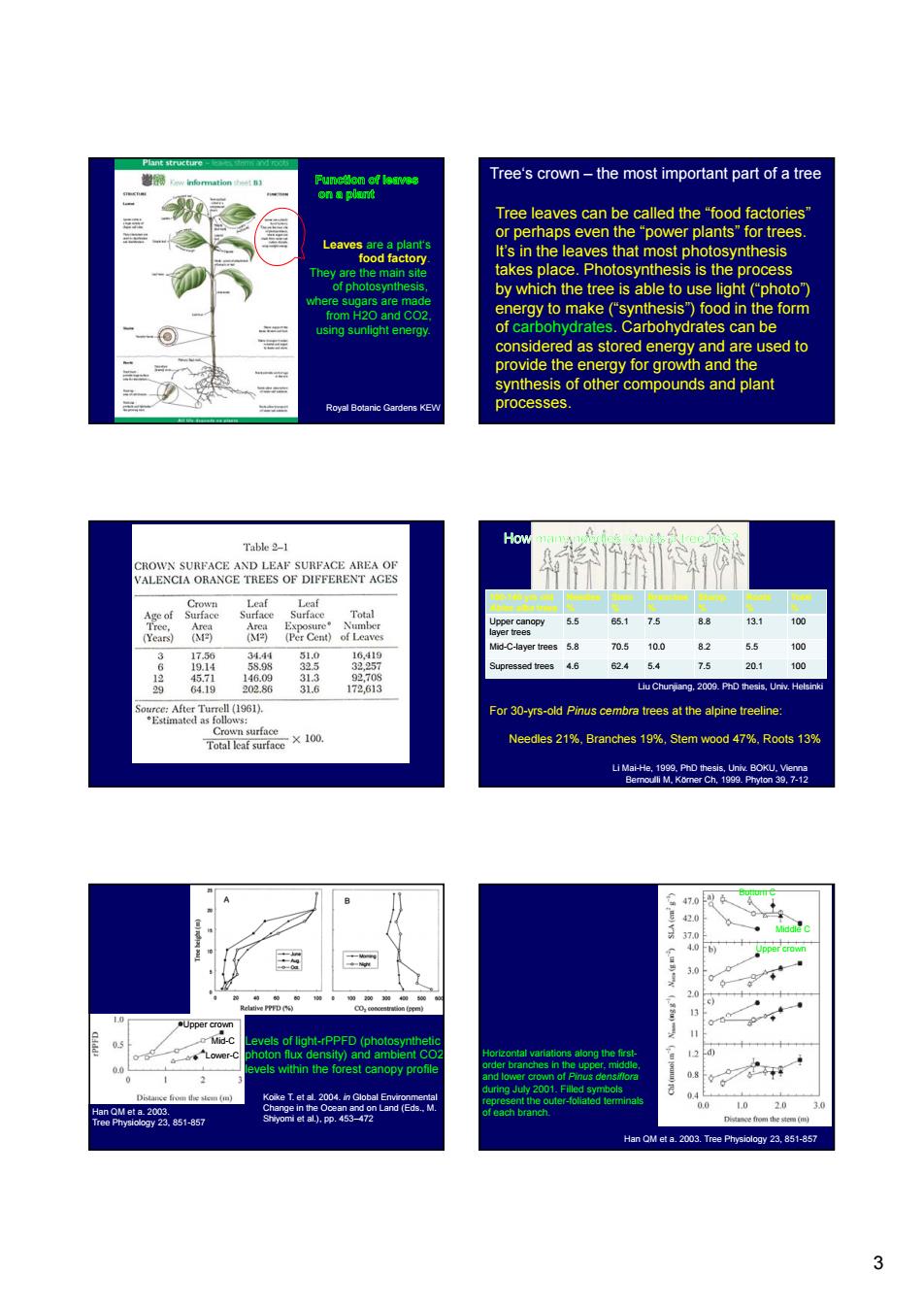正在加载图片...

Tree's crown-the most important part of a tree Tree leaves can be called the"food factories" even theo lants" by which the tree is able to use light ("photo considered as stored energy and are used to ALENCIA DHANCE TREES OF DIPFERENT ACE 鲨雷蕾出 131 70510 離 20.1 (61) For 30-yrs-old Pinus cembra trees at the alpine treeline: u2C7 3 3 Leaves are a plant‘s food factory. They are the main site of photosynthesis, hotosynthesis, where sugars are made from H2O and CO2, using sunlight energy. Royal Botanic Gardens KEW Tree leaves can be called the “food factories” or perhaps even the “power plants” for trees. It’s in the leaves that most photosynthesis takes place. Photosynthesis is the process by which the tree is able to use light (“photo”) Tree‘s crown – the most important part of a tree by which the tree is able to use light ( photo ) energy to make (“synthesis”) food in the form of carbohydrates. Carbohydrates can be considered as stored energy and are used to provide the energy for growth and the synthesis of other compounds and plant processes. 100-140 yrs old Abies alba trees Needles % Stem % Branches % Stump % Roots % Total % Upper canopy layer trees 5.5 65.1 7.5 8.8 13.1 100 Mid-C-layer trees 5.8 70.5 10.0 8.2 5.5 100 Liu Chunjiang, 2009. PhD thesis, Univ. Helsinki For 30-yrs-old Pinus cembra trees at the alpine treeline: Needles 21%, Branches 19%, Stem wood 47%, Roots 13% Li Mai-He, 1999, PhD thesis, Univ. BOKU, Vienna Bernoulli M, Körner Ch, 1999. Phyton 39, 7-12 Supressed trees 4.6 62.4 5.4 7.5 20.1 100 Levels of light-rPPFD (photosynthetic photon flux density) and ambient CO2 levels within the forest canopy profile Koike T. et al. 2004. in Global Environmental Change in the Ocean and on Land (Eds., M. Shiyomi et al.), pp. 453–472 Han QM et a. 2003. Tree Physiology 23, 851-857 Upper crown Mid-C Lower-C Upper crown Middle C Bottom C Horizontal variations along the firstorder branches in the upper, middle, and lower crown of Pinus densiflora during July 2001. Filled symbols represent the outer-foliated terminals of each branch. Han QM et a. 2003. Tree Physiology 23, 851-857